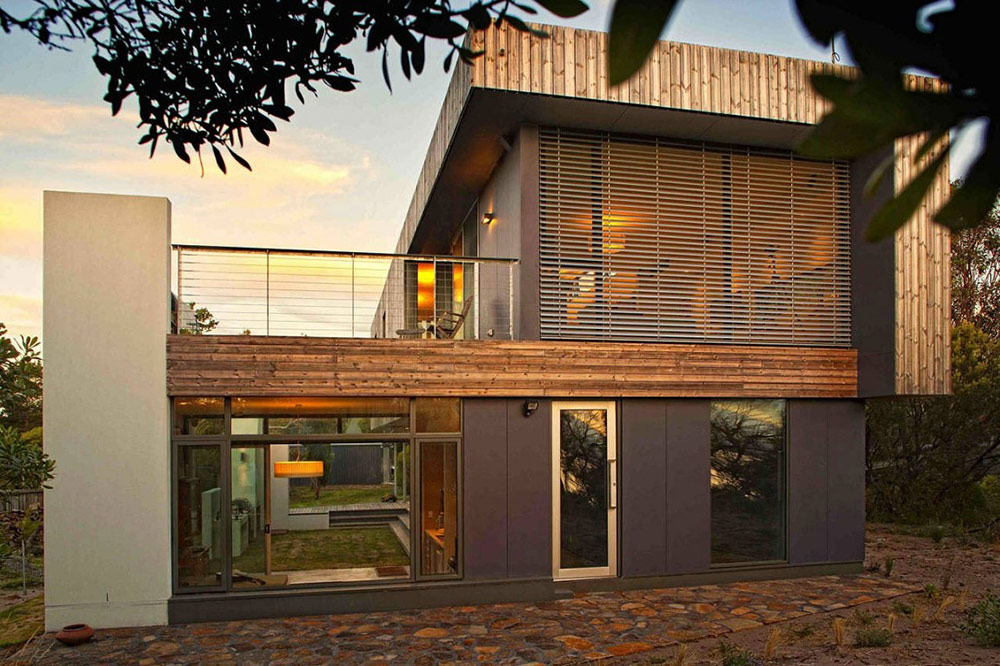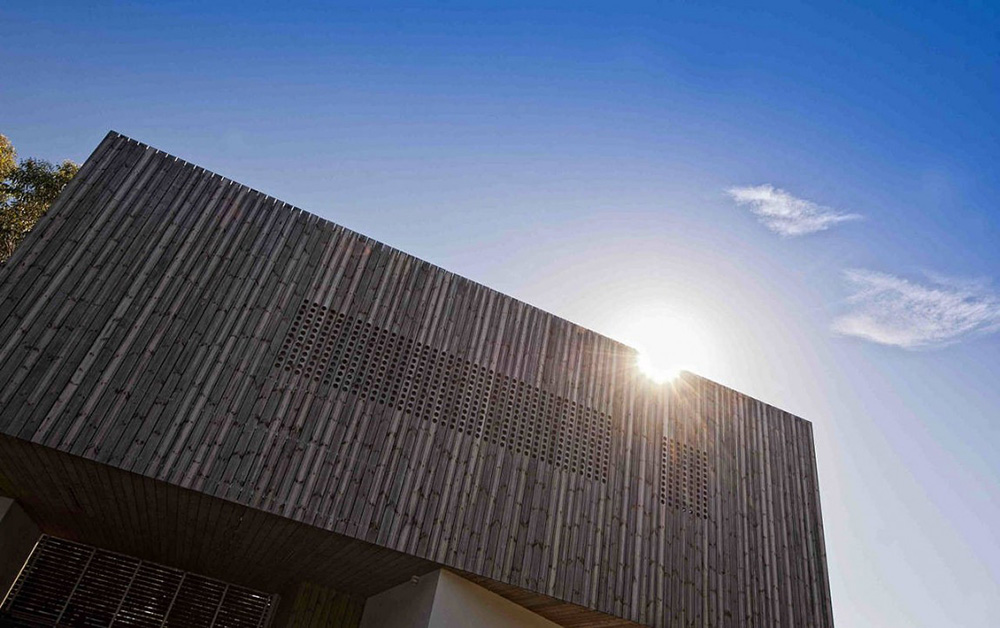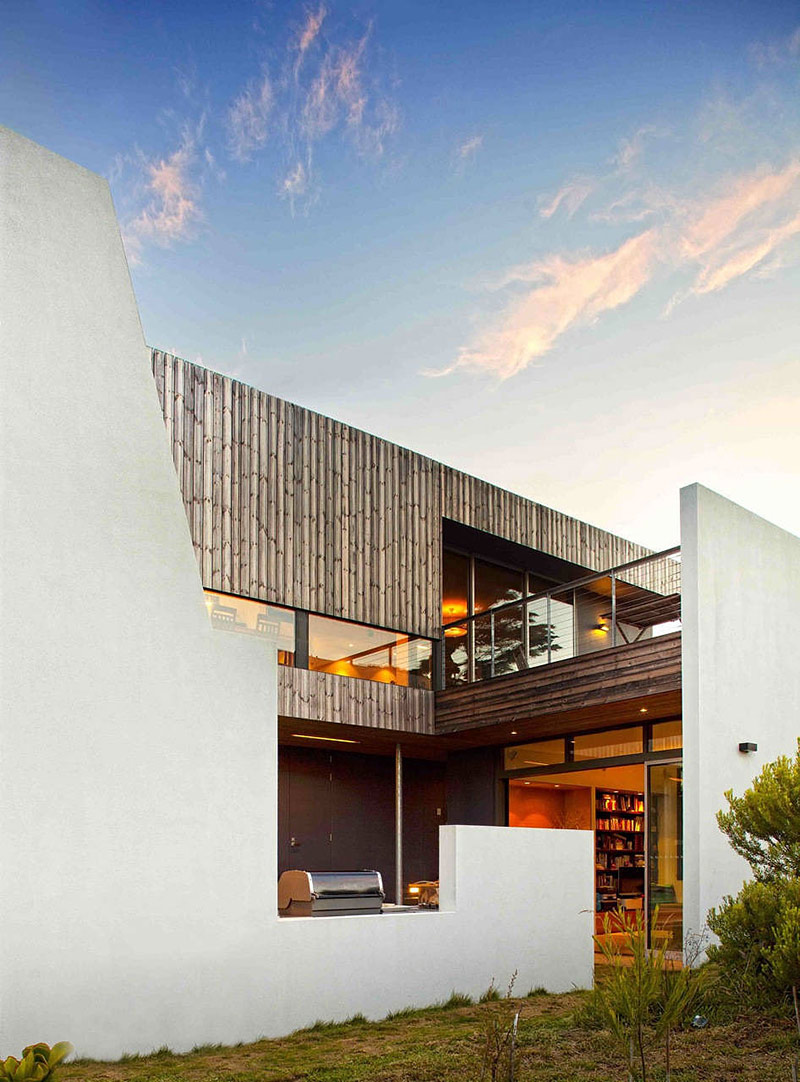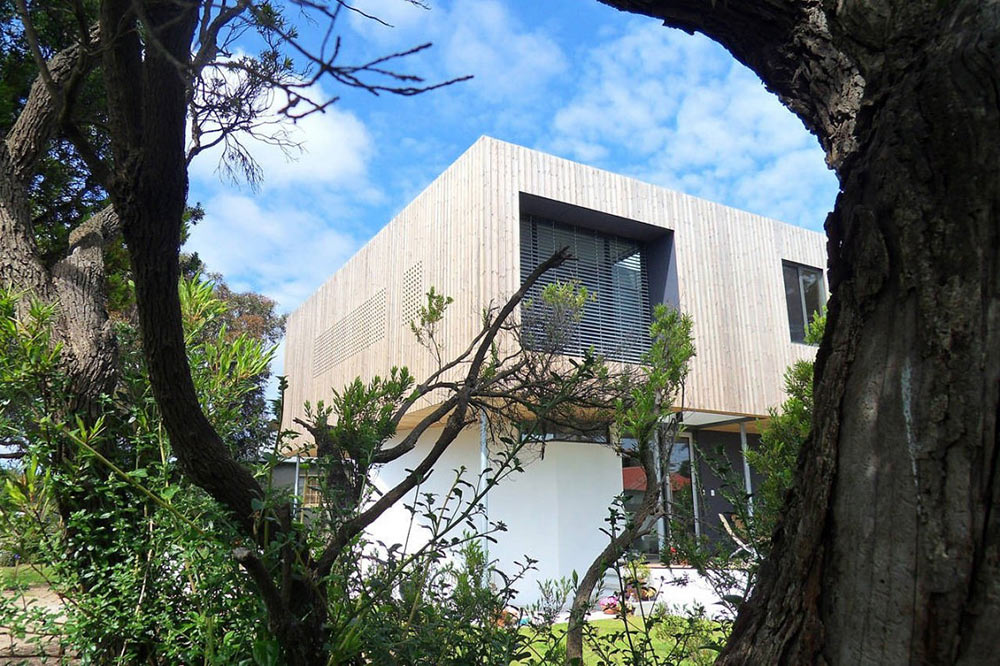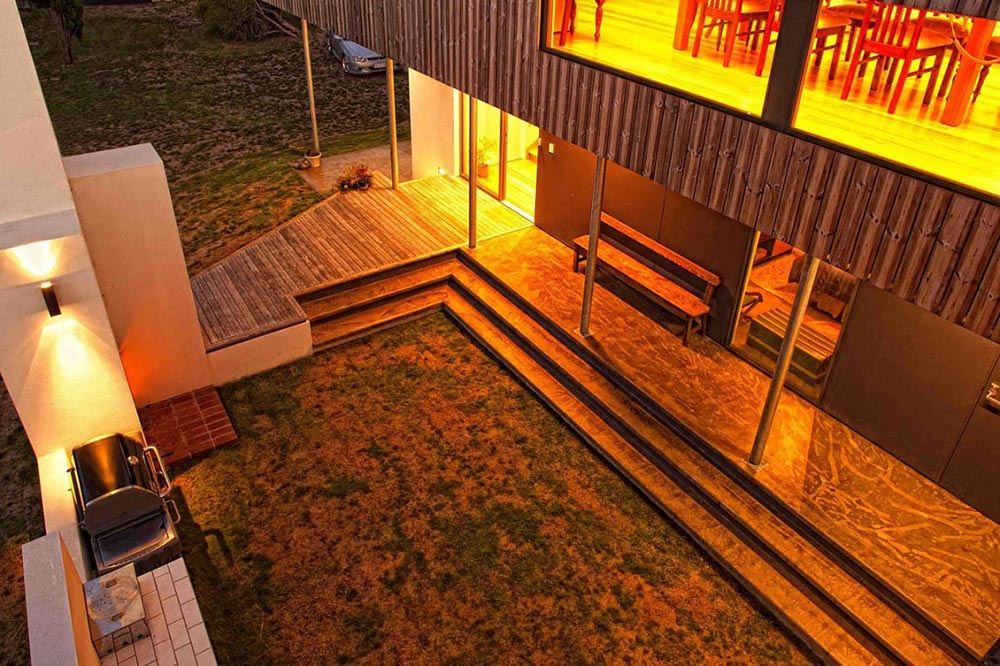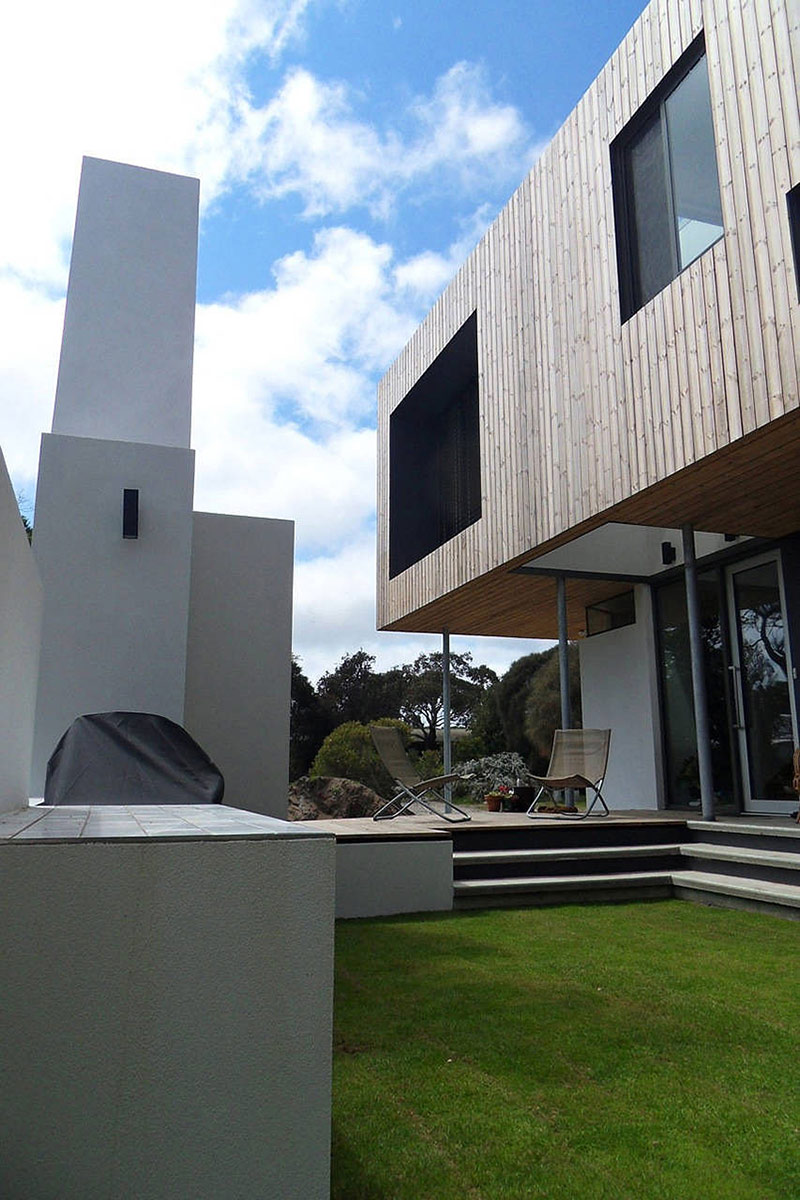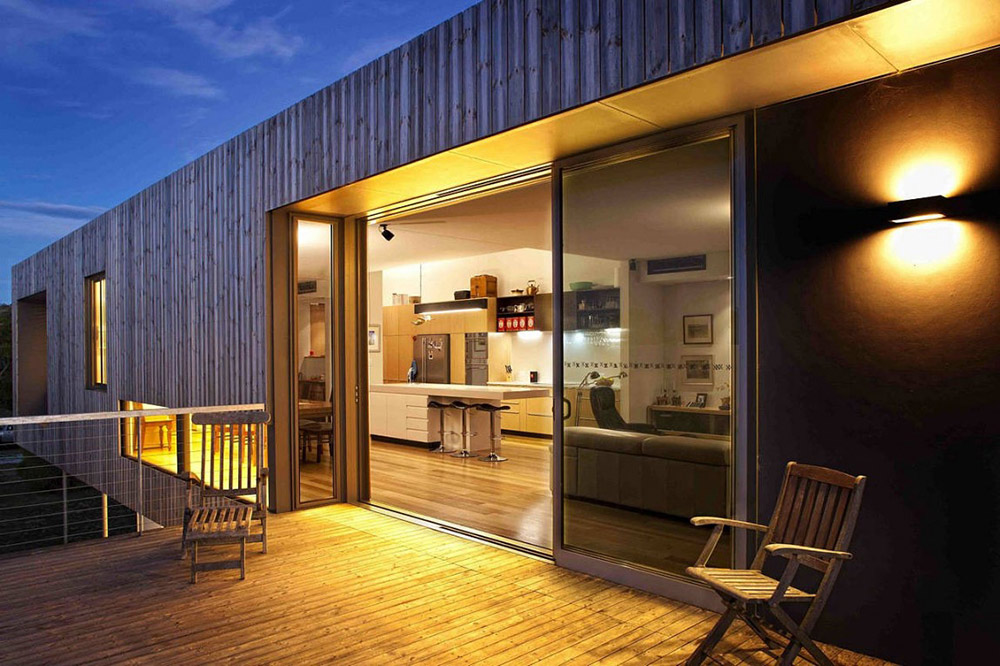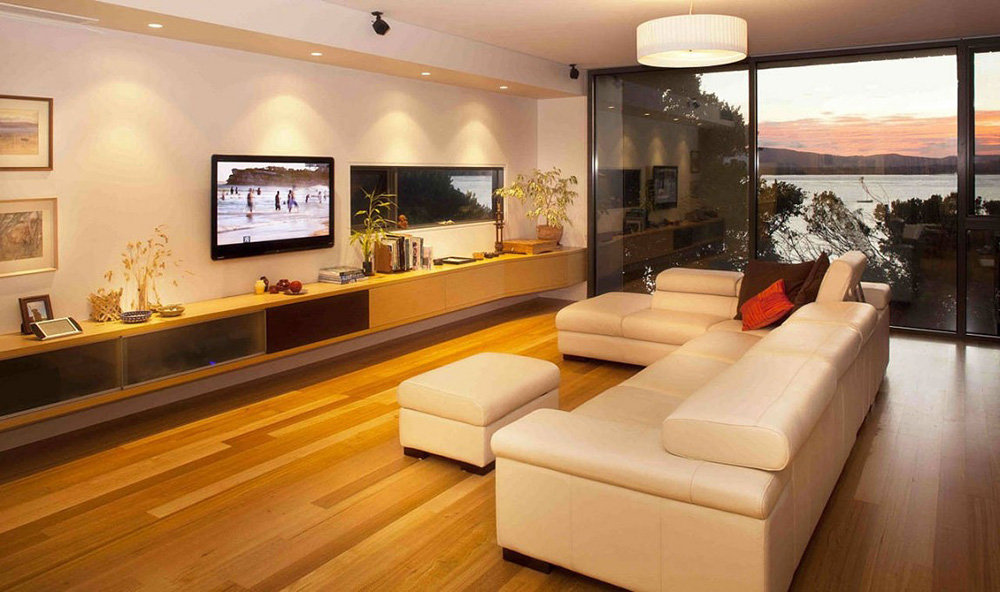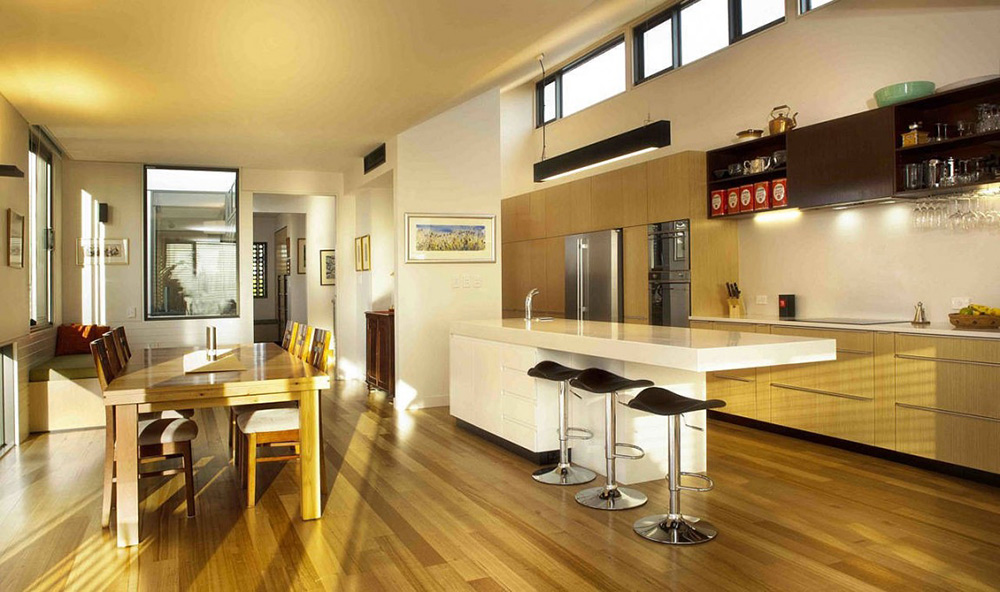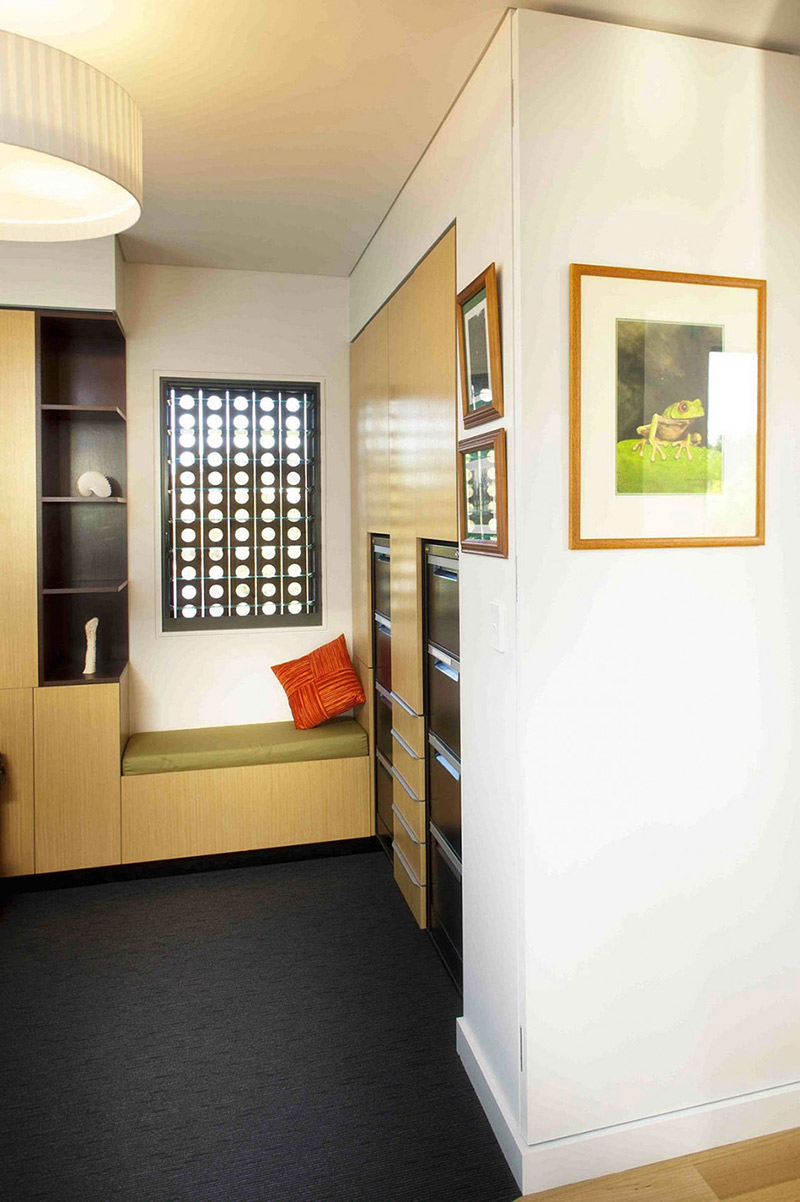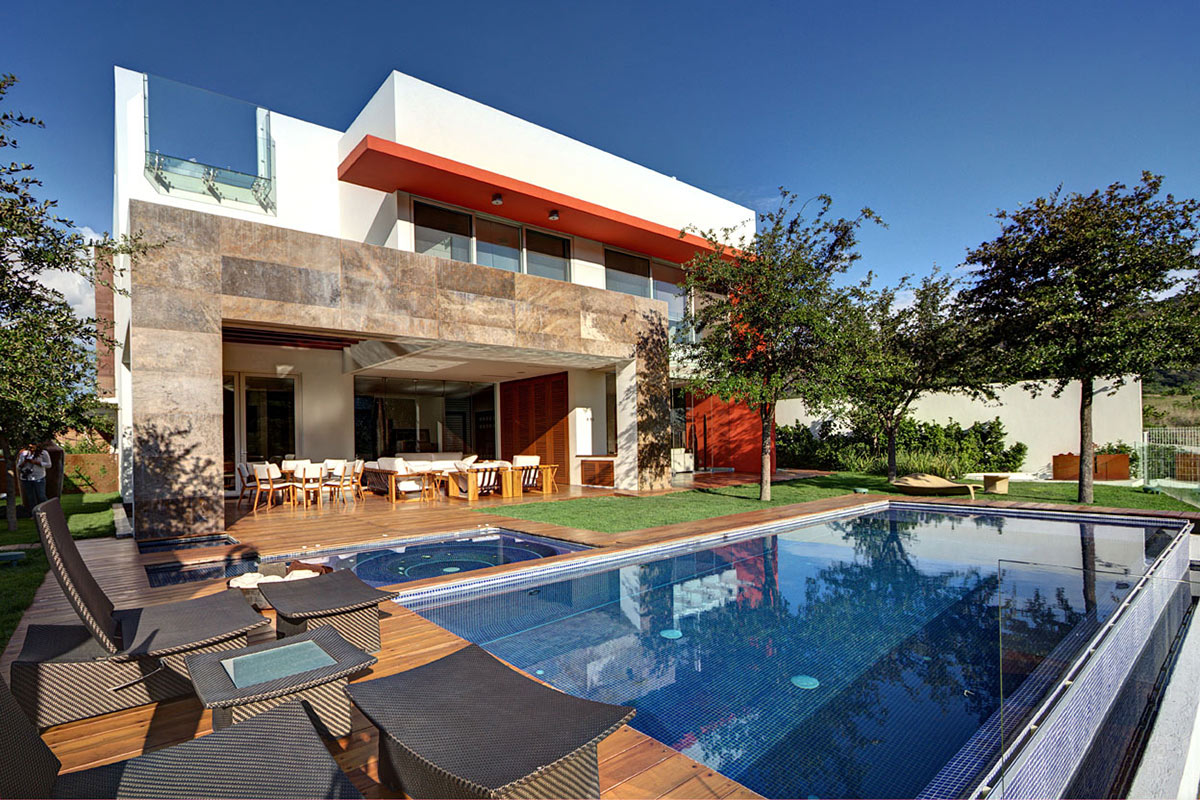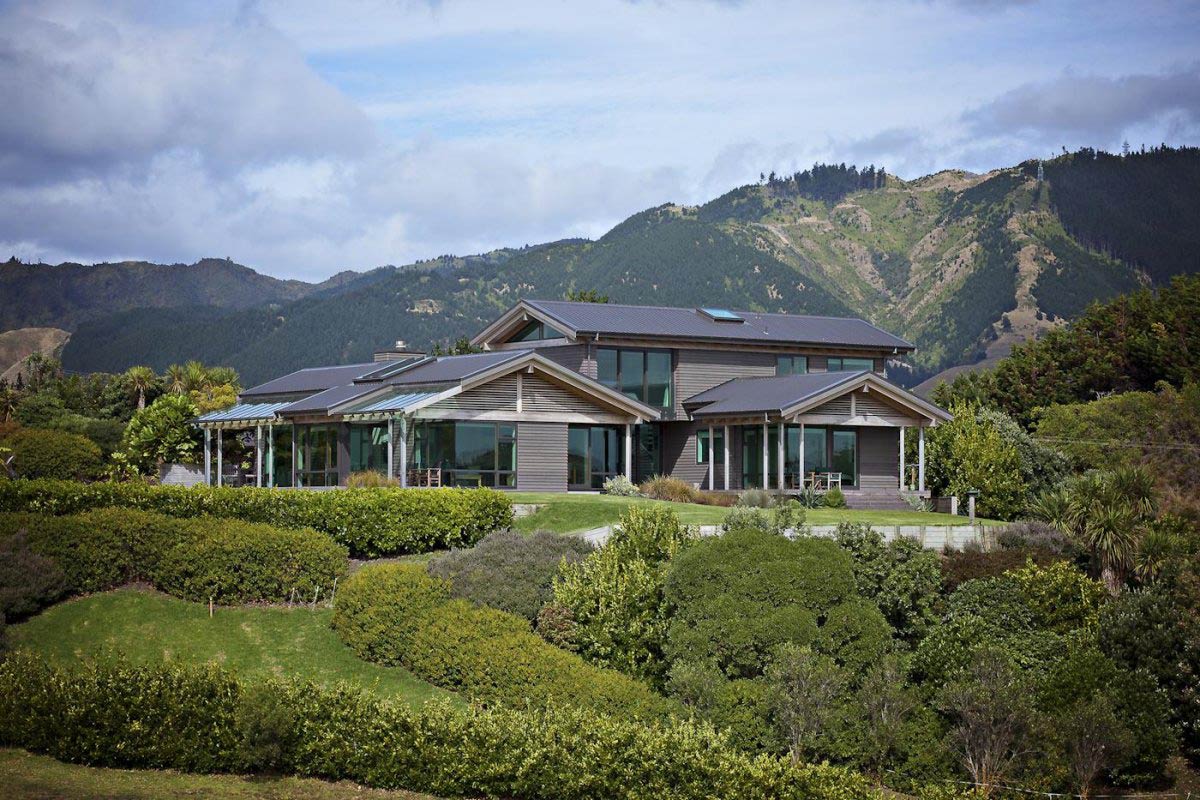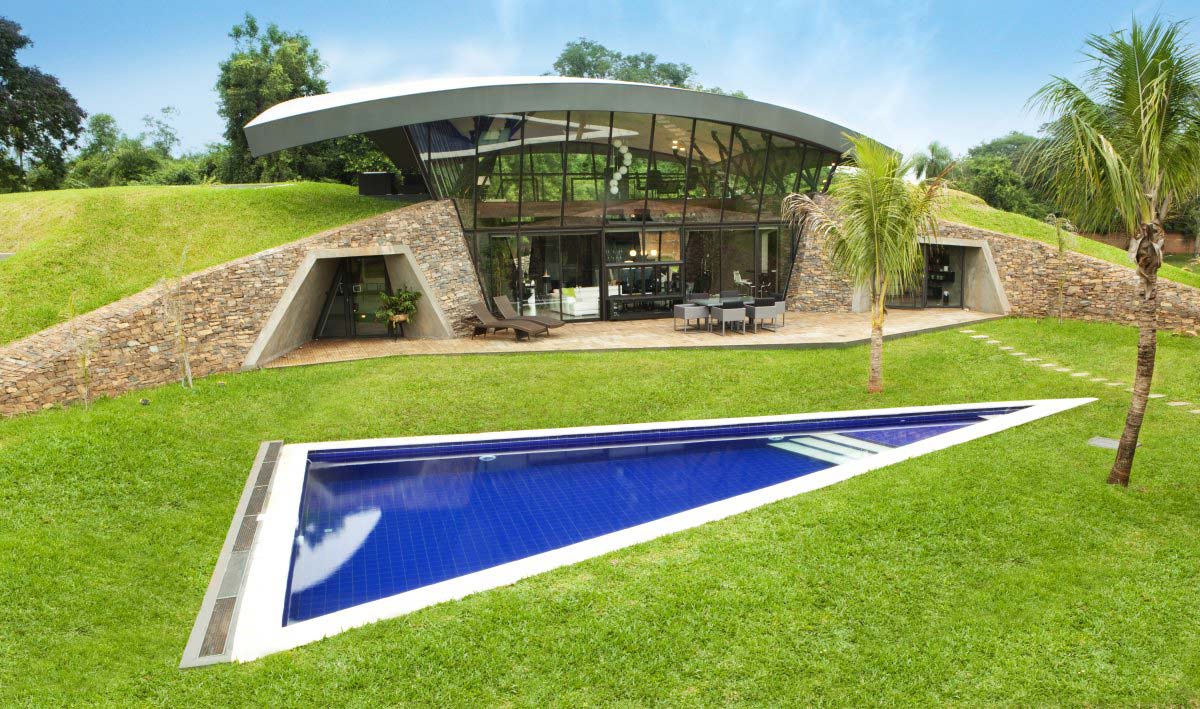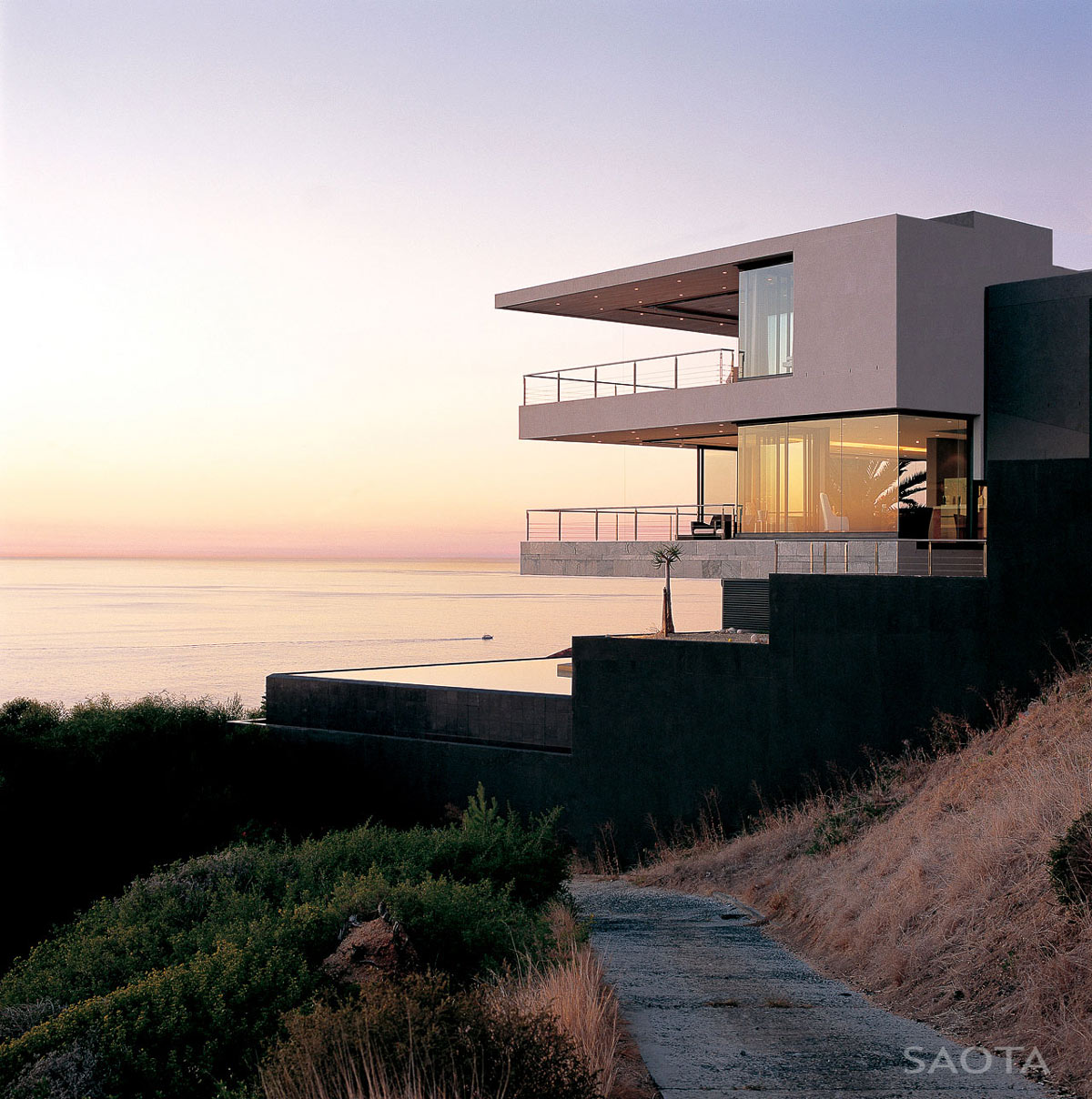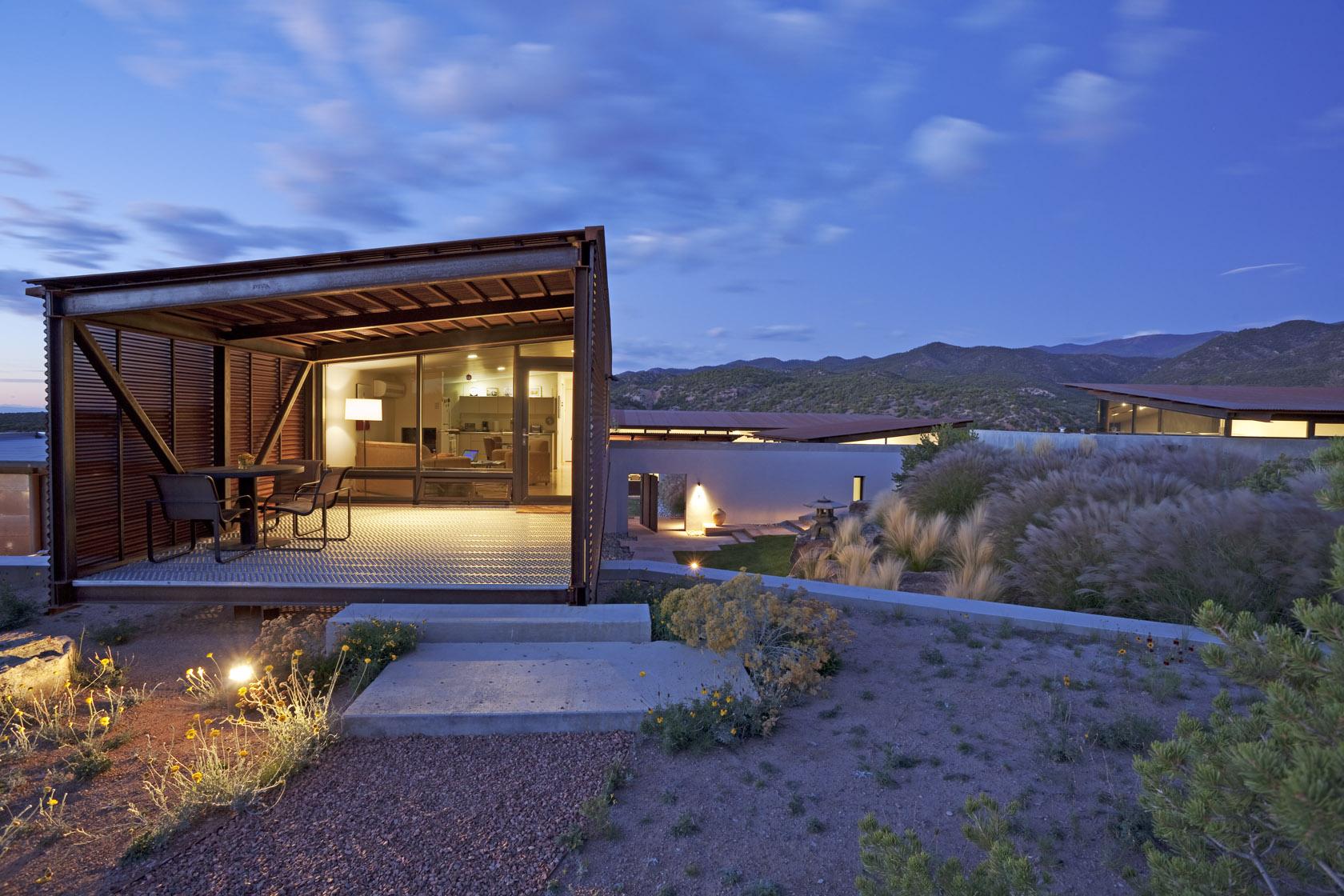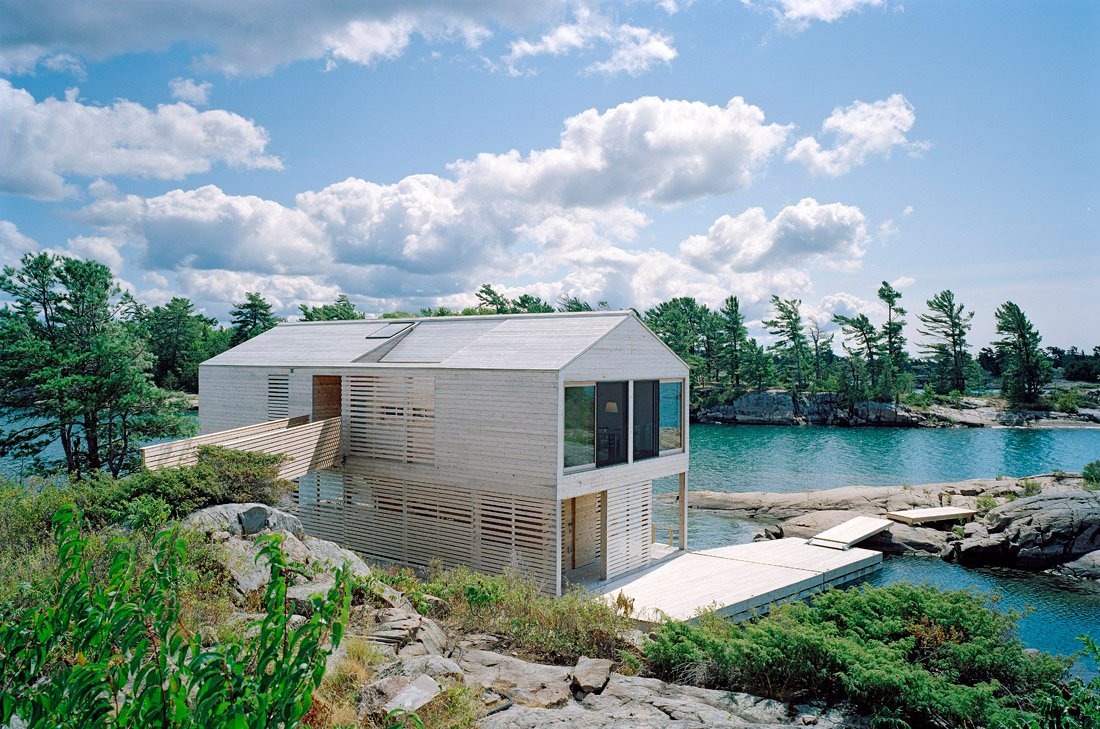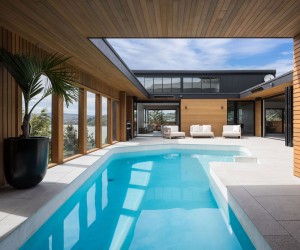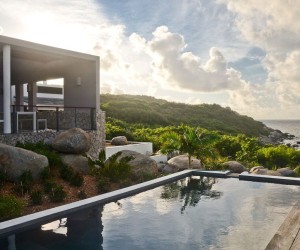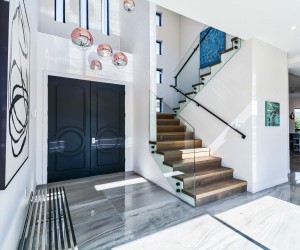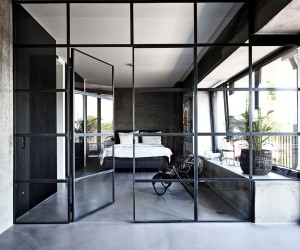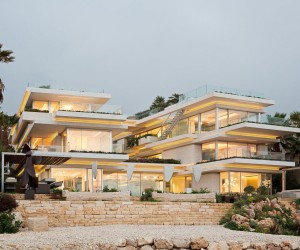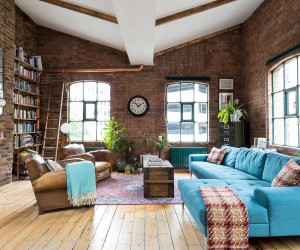Lagoon Beach House, Tasmania by Birrelli Architecture
The Lagoon Beach House was completed in 2012 by the Launceston based studio Birrelli Architecture. This 2,745 square foot contemporary residence is located in Low Head, Northern Tasmania, Australia.
Lagoon Beach House by Birrelli Architecture:
“Lagoon Beach House is set within a ‘hamlet’ of a few scattered shacks, with a wonderful lack of fences the site supports strong bonds between three Tasmanian families – 40 extended family and friends spanning four generations make this their special island retreat, a place for shared living and holiday experiences. Located on the east edge of the Tamar River where it meets Bass Strait the site is surrounded by tea trees, fresh water lagoon and dunes.
The residence is pragmatically organised around north point, neighbors’, privacy, contour, wind and views. The main living spaces, main bedroom and study are efficiently planned all on first floor for the comfort of two. Set carefully at a height above ground the main living level captures westerly views over boobyalla, looking westward towards the estuary and Heads.
On ground level the home ‘extends’ simply with accommodation for multiple guests, three double bedrooms and a bunk/family room generously support large gatherings. A fun unpretentious ‘big-room’ connects onto a ‘town-square’ courtyard with open fire, smoking oven, bbq, and terraced seating setting the stage for the beachside home and relaxed living.
Lagoon Beach House while modernist in programme is nonetheless a contemporary shack referencing the Tasmanian shack vernacular. A minimalist geometry reminiscent of Jean Prouve’s elegance with economy of means the upper form of a honed wooden box, vertical boards that will change colour with time, floats over its white plinth.
Formed around the idea of a ‘town-square’ the house has an implied semi-public realm, yet the ‘positive’ pressure of the courtyard-piazza is paradoxically the intimate garden for the home. The sculptural form of this private retreat pin-wheels around the focal point of the courtyard, a ‘stage for living’ where Steve and Leonie express their individuality, connecting in varied ways the social life of the ‘hamlet’ with lagoon, beach, and interior spaces.
The building blends with nature in a sculptural way, and evokes associations with land art. Influences are De Stijl, cubism, minimalism and the works of Ando and writings of Zumphor. With maximum simplicity the reduced palette of materials: untreated wood, glass and masonry, sets out to preserve the landscape and social life of the site. The living space of the family bunkroom ‘big-room’ is intentionally set down into the ground, other accommodation spaces are carefully placed on grade with the contours of the remnant dune.
In this way the building does not isolate itself from the natural environment. The pure wooden geometry of the upper level is carefully set within the surrounding trees but not above them, light is grabbed by high windows, atriums over stairs and low openings with screens and circular perforations – so that with movement a sensual effect is created providing a diverse and intimate relationship between building and nature.
Detail is central to reinforcing the concept of the building evoking land art: exterior walls dematerialize with stacked perforations changing the view of the world outside; the buildings white plinth is sliced by an oblique wall establishing an invisible line to the nearby lagoon from the courtyard entry, solid-void shapes jigsaw about the courtyard defining it in sunlight and shadow; and larger windows are deeply recessed – all elements are detailed to animate the buildings dialogue with the genus-loci of the site.
Sustainable and legally procured timbers are used for both framing and facade – wood is certified under the Finnish Forestry Certification System and the PEFC. Cladding is untreated high durability grade timber; automated blinds control views and solar gain on the western elevation, rain screen and double glazing in the facade reduce wind chill in winter and heat loads in summer.
Clerestory with remote control louvers allows for quick heat dump and good natural cross-ventilation; grid return photo-voltaic solar collectors 2Kw, and rainwater tanks 22000 ltrs with first flush system, all combine to provide the home with a low carbon footprint and future-proof running costs. Steve reports that the first low winter power bill was offset completely by summer power credits returning a zero net running cost for the home.”
Comments



